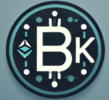🌐 What Is Polygon?
Polygon, formerly known as Matic Network, is a Layer 2 scaling solution designed to enhance Ethereum’s capabilities. It aims to provide faster and cheaper transactions on Ethereum using sidechains and other Layer 2 solutions.
Originally launched in 2017, Polygon rebranded in 2021 to reflect its expanded mission of creating a multi-chain system compatible with Ethereum. The platform supports various scaling solutions, including Plasma chains, zk-Rollups, and Optimistic Rollups, making it a versatile infrastructure for developers and users alike.
🛠️ How Polygon Works
Polygon operates by processing transactions on its own Proof-of-Stake (PoS) sidechain, which are then periodically finalized on the Ethereum mainnet. This approach significantly reduces transaction costs and increases throughput.
Key components of Polygon’s architecture include:
- Polygon SDK: A modular framework for building and connecting Ethereum-compatible blockchain networks.
- PoS Chain: The main chain used for general-purpose transactions.
- Plasma Chains: For specific use cases requiring high throughput.
- zk-Rollups and Optimistic Rollups: Advanced Layer 2 solutions for scalability and security.
This multi-pronged approach allows Polygon to cater to a wide range of applications, from DeFi to gaming and NFTs.
🔗 MATIC Token: Utility and Tokenomics
The MATIC token serves multiple purposes within the Polygon ecosystem:
- Transaction Fees: Used to pay for transactions on the network.
- Staking: Validators stake MATIC to secure the network and earn rewards.
- Governance: Token holders can participate in governance decisions.
As of April 2025, MATIC has a total supply of 10 billion tokens, with a circulating supply of approximately 9.3 billion. The tokenomics are designed to be deflationary, with a portion of transaction fees being burned, similar to Ethereum’s EIP-1559 mechanism.
🚀 Polygon 2.0 and the Transition to POL
Polygon has announced plans for Polygon 2.0, which includes the introduction of a new token, POL, intended to replace MATIC. The POL token aims to serve as a universal token for all Polygon protocols, enhancing interoperability and governance across the ecosystem.
Key features of POL include:
- Universal Utility: Serving as the primary token across all Polygon protocols.
- Enhanced Governance: Allowing for more comprehensive participation in protocol decisions.
- Staking and Security: Providing security across multiple chains within the Polygon ecosystem.
The transition from MATIC to POL is expected to be gradual, ensuring stability and continuity for users and developers.
🌍 Ecosystem and Partnerships
Polygon has established a robust ecosystem with numerous high-profile partnerships:
- Meta (Facebook): Collaborated on integrating NFTs into Instagram.
- Reddit: Launched community points on Polygon’s network.
- Starbucks: Developed a blockchain-based loyalty program.
- Disney: Selected Polygon for its 2022 accelerator program.
- Adobe: Integrated Polygon into its Behance platform for NFT support.
These partnerships highlight Polygon’s versatility and appeal across various industries, from social media and entertainment to finance and art.
📈 Use Cases and Applications
Polygon’s scalability and low transaction fees make it an attractive platform for a variety of applications:
- Decentralized Finance (DeFi): Hosting protocols like Aave, Curve, and SushiSwap.
- Non-Fungible Tokens (NFTs): Supporting marketplaces like OpenSea and projects like Decentraland.
- Gaming: Powering blockchain games such as Zed Run and The Sandbox.
- Enterprise Solutions: Facilitating supply chain management and identity verification.
The platform’s flexibility and developer-friendly environment continue to drive innovation and adoption.
🛒 How to Buy MATIC
Acquiring MATIC is straightforward:
- Sign Up: Create an account on CEX.io.
- Verify Identity: Complete the KYC process for enhanced security.
- Deposit Funds: Add fiat or cryptocurrency to your account.
- Purchase MATIC: Navigate to the trading platform and buy MATIC.
CEX.io offers a user-friendly interface and supports various payment methods, making it accessible for both beginners and experienced traders.
🧠 Final Thoughts
Polygon stands out as a comprehensive solution to Ethereum’s scalability challenges. Its multi-chain architecture, combined with a strong ecosystem and strategic partnerships, positions it as a leading platform in the blockchain space.
Whether you’re a developer seeking scalable infrastructure or an investor looking for promising projects, Polygon offers a compelling proposition.
Ready to explore Polygon?
👉 Buy MATIC on CEX.io

